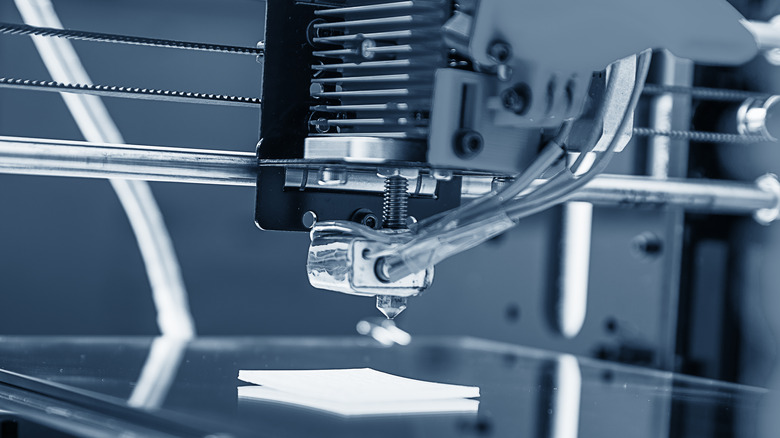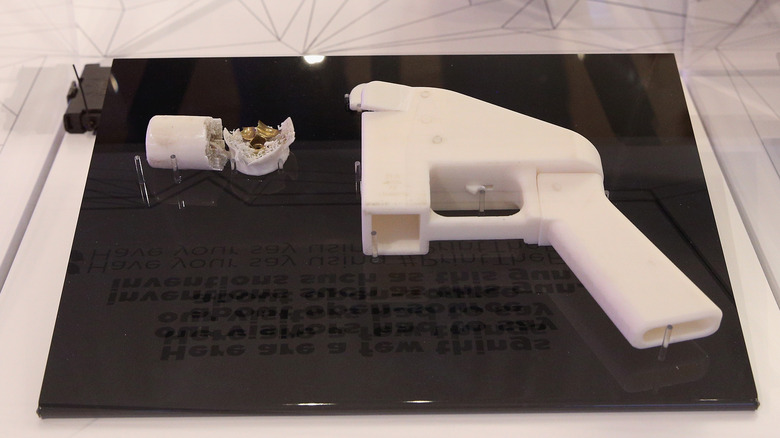The Scary Weapon People Can Create With 3D Printers
As anyone who has one will likely tell you, 3D printers are great. With people printing everything from custom action figures, elaborate Iron Man costumes (via Thingiverse), and even homes (via The Guardian), 3D printing has really begun to come into its own.
However, a new phenomenon has slowly been infiltrating the 3D printing community: The ability to create firearms. Now known as a "ghost gun," the first plastic firearm was produced by a 3D printer in 2013 (via 3D Natives). Created by University of Texas law student Cody Wilson, "The Liberator" plastic firearm was printed, assembled, and tested on May 6, 2013, per V&A. After successfully firing a bullet, Wilson promptly released the CAD (computer-aided design) file of the Liberator onto the internet the very next day. According to 3D Natives, the file went viral immediately, seeing more than 100,000 downloads in its first two days. Composed of 15 individually printed pieces, the process to create Wilson's Liberator takes about 20 hours. Once printed, the Liberator can be quickly assembled with the inclusion of a single metal pin.
Expensive and not easy to create
At first glance, the prospect of people creating firearms at home is frightening, especially with the CAD file to recreate the Liberator widely available on the internet. However, according to The Atlantic, it isn't as simple as pressing "print" on a computer, either. The process is slow, not cheap, and according to David Kennedy, the director of the Center for Crime Prevention and Control at John Jay College in New York, not worth the effort. "The panic that this is causing is completely unfounded. It's not that hard to build a crude, working firearm," he said. "It is a lot easier and would be a lot easier to fabricate something with existing materials than it would be to set up a printer and build one of these things. Home manufactured firearms are a next-to-nonexistent problem anywhere."
Besides the effort involved in creating a 3D printed firearm, there are some ethically gray areas in regard to home-printed weapons, but not legally. According to the Undetectable Firearms Act of 1998, a legal firearm must contain at least one piece of metal, so that they can be picked up by a metal detector (via The Atlantic). After several years of legal wrangling by Cody Wilson to avoid the metal standard in homemade weapons, 3D printed firearms became legal in 2018 after President Trump signed legislation decriminalizing them, with one important exception, however. According to The Trace, it is legal to print firearms as long as they include a metal component noted in the Undetectable Firearms Act. So, while the information to create a firearm is out there, much like everything else, it likely takes too much time, money, and effort to actually follow through.

